Old diving suits can seem very bulky to us today. Some of them even look like they came out of a horror movie. The truth is that these were dating from a long time ago.
Over time, and with the appearance of new technologies, these evolved, until they became what we now know as diving suits, much lighter, more precise and aesthetic than those of old.
In this article, we are going to tell you about five of them.
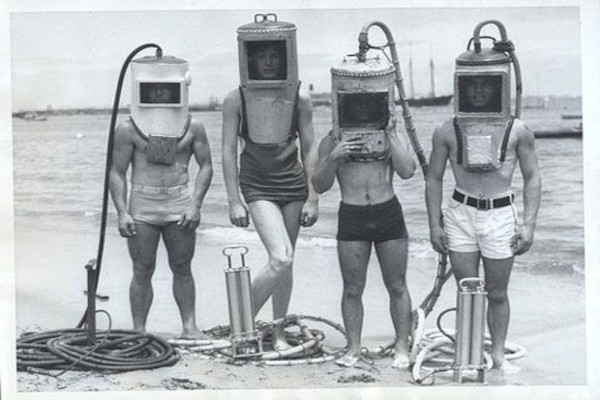
Beauve’s suit
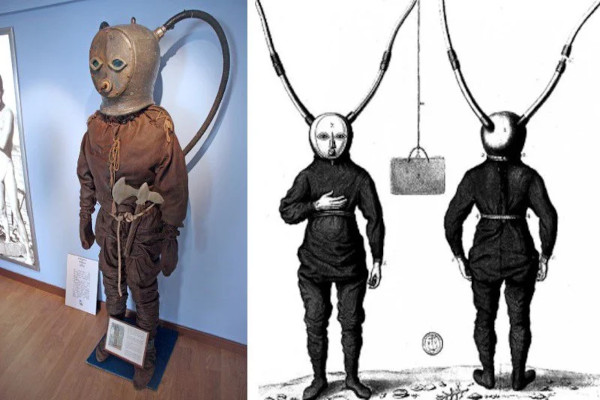
Year: 1715
One of the first diving suit is the one made by Sir Pierre Rémy de Beauve around the year 1715.
Sir Pierre Rémy de Beauve was a French aristocrat.He served in the marine in the city of Brest in France. This man built one of the oldest known diving suite.
It has a metal helmet connected to two hoses, which would allow the diver to breathe air pumped by a bellows at the surface through one of the hoses. The other hose would allow the diver to exhale air.
Characteristics: A primitive example of the first prototypes. It was a leather suit that covered a steel plate to protect the chest, and included weighted shoes to be anchored to the bottom of the seabed and breathing tubes.
The Scarecrow
Year: 1797
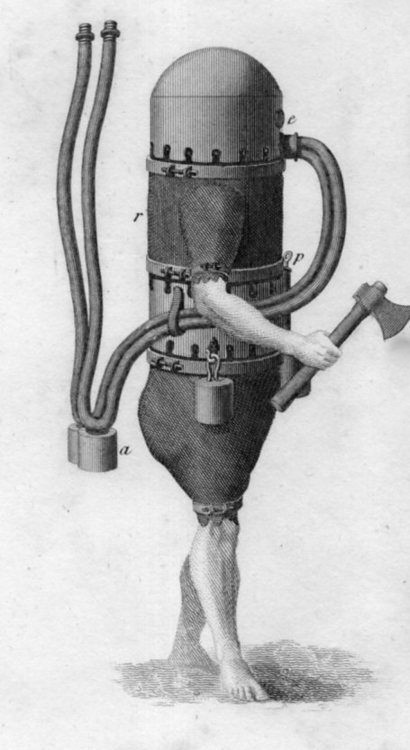
Characteristics: An impractical model, which left legs and arms exposed and did not have boots of any kind. Weights were worn hanging from the waist. That said, we love the diving suit. One of the most curious designs among old diving suits.
Siebe’s suit
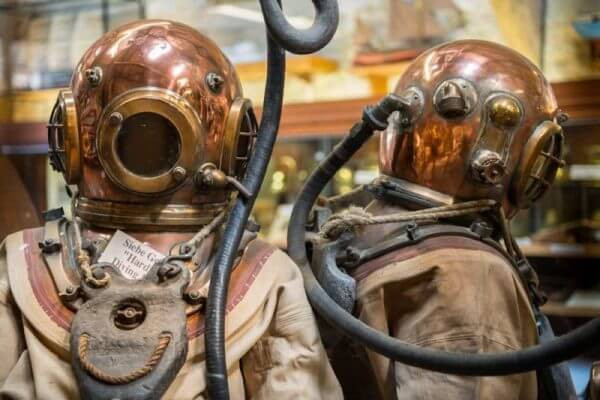
Year: 1837
Another of the old diving suits, the German Siebe created what we could call the first diving suit with modern concepts that are still used today.
Augusto Siebe was born in Germany, but lived in England. Mr. Siebe developed a diving helmet that could be hermetically sealed to a rubber suit.
This suit was connected to an air pump that was on the surface. The suit becomes the first effective diving suit in its time.
For this reason, Mr. Siebe received the name “Father of Deep Sea Diving”.
Baker’s suit
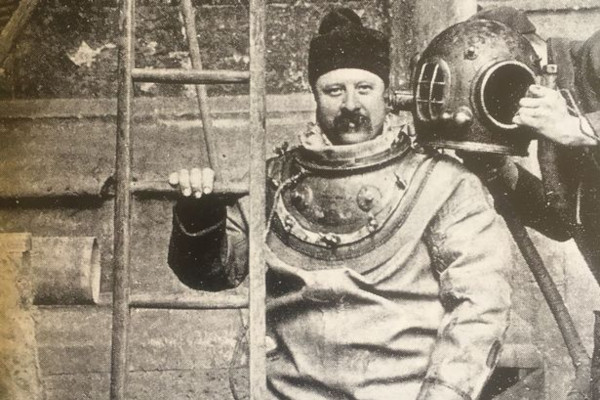
Year: Early 20th century
Characteristics: Following other old diving suits, this was one of the first suits whose effectiveness was demonstrated and which was put to the test by fire. Between 1907 and 1911, William Baker used it to mark the foundations of Winchester Cathedral, which was flooded and in danger of total collapse.
Hall & Reese’s underwater apparatus
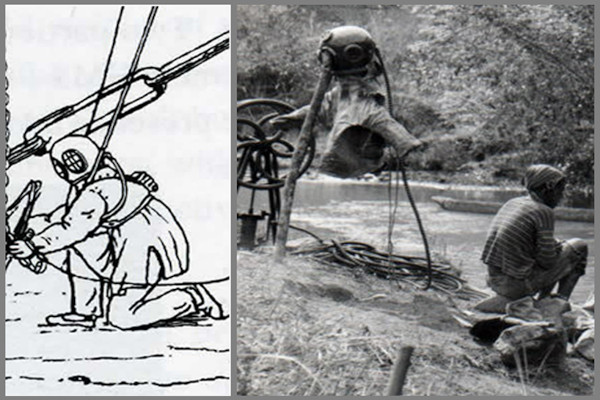
Year: 1908
Characteristics: The suit was popular for a few years.
The one that It quickly came after, to replace it was the Mark V. Its helmet made it look like a robot from a 50s sci-fi movie.
This was one of the old diving suits that incorporated a cylinder of ‘Oxylyte’, a chemical compound that emitted oxygen and absorbed carbon dioxide.
It may interest you: What is the best scuba diving suit? A complete guide
